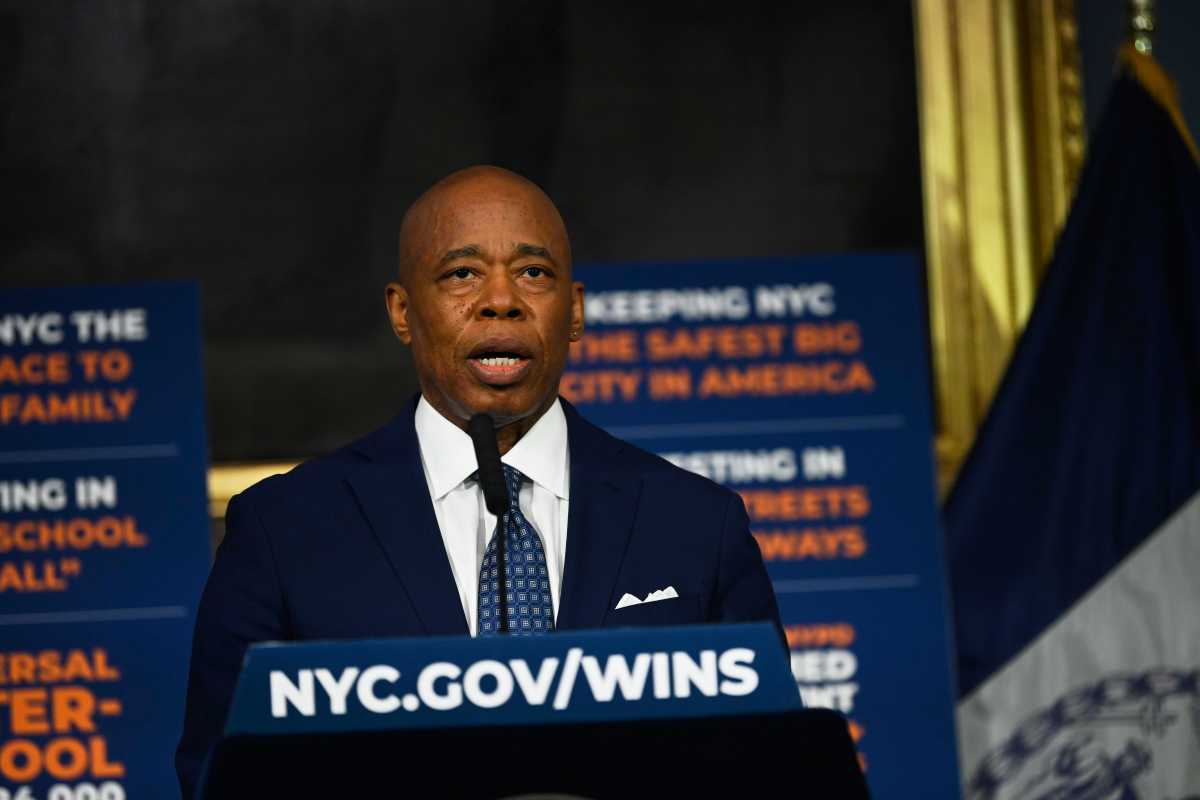During the last election cycle, the national conversation was centered on Democratic victories in Kentucky, Ohio and Virginia. However, in deep-blue New York, downstate Republicans notched victories in Long Island, Staten Island, Brooklyn, Queens and the Bronx – yes, you read that correctly, in the Boogie-Down Bronx, in the same district represented by Congresswoman Alexandra Ocasio-Cortez, by first-time candidate, Kristy Marmorato, a life-long Bronxite and healthcare professional, married with a young daughter, in the Morris Park section of the Bronx.
Marmorato, sworn in last month, is the first Bronx Republican sent to the City Council in over 40 years. Instead of seeing this as a positive sign of bipartisan representation, in a borough where most election decisions are made by Democratic committee members in closed-door meetings, high-brow liberal New York Magazine lamented Marmorato’s landslide victory over incumbent City Councilwoman Marjorie Velazquez in a district with a 62% Democratic advantage, written by columnist Errol Lewis, under the headline, “How a NYC Councilwoman Lost Her Job for Doing the Right Thing.” (New York Magazine, Nov. 11, 2023)
Lewis’ article portrayed former Velazquez as a “Profile in Courage” who’s loss “hurt all of New York” because of her support for increased multifamily developments in her district of low-density zoning. The area in question, 2945 Bruckner Blvd., would’ve planted four high-rise apartments in one of the most congested areas in the Bronx, where the Bruckner Expressway intersects with I-95, Hutchison River Parkway, and the Cross Bronx Expressway with heavy traffic flowing in and out of the two main bridges connecting Long Island to Mainland USA – the Throggs Neck and the Whitestone bridges. Any issue on those two bridges becomes a traffic nightmare on Bruckner Boulevard and every other street in the area.
The East Bronx communities that make up Council District 13 live with this constant reality, and former Councilwoman Velasquez knows this as well, for she initially opposed this project, citing “the lack of school space, parking, public transportation” as reasons to not move forward with the rezoning plan. However, her mind was changed when she faced pressure from Mayor Eric Adams and City Council Speaker Adrienne Adams. These entities helped Velazquez secure the support from Labor Strong, a coalition of influential city-based unions, such as DC-37, SEIU 32BJ, District Council of Carpenters, among others.
Upon Velazquez receiving political cover from her party leaders and labor, she changed her mind and voted to rezone this area, against the wishes of her own constituents. Lewis referred to District 13 constituents as “Not In My Backyard (NIMBY) activists” and how they turned against the incumbent candidate and voted their NIMBY hearts out for a political neophyte, who Lewis derided as just an “X-ray technician,” and how her election would be seen as a setback for the housing crisis needs of the city.
According to Lewis, Council District 13 constituents had a responsibility to vote the party line and accept what city leaders felt what was best, in terms of the needs of the city, and disregard their desire to preserve the character of their neighborhoods they fought so hard to keep as a low-density community.
What Lewis failed to realize is that redevelopment was not the only issue that led to Marmorato’s victory. Her victory was due to a myriad of reasons, the most important of which was that the candidate, herself, and her team outworked her opponent, meeting with constituents, listening to their concerns, knocking on doors, and making sure voters knew where they needed to go vote, during both the early election period and on Election Day.
Another pertinent reason for Marmorato’s victory, comes from District 13 voters finding their voice after enduring years of complete mismanagement by New York’s political leaders. Bronxites in the 13th Council District lived through the draconian COVID mandates, saw their children suffer needlessly via extended remote learning, witnessed businesses shutter, fear rising crime and lawlessness, due in large measure to disastrous bail reform measures, increased cost of living, rising inflation, an unabetted migrant crisis, increased taxes and increased energy costs.
In the face of all these maladies plaguing our city, 13th Council District constituents have seen their relatives, friends and neighbors express their dissatisfaction with their governance by voting with their feet and escape New York City to the suburbs or out of the state entirely.
According to United States Census data, since the 2020 pandemic to date, New York has lost nearly half-million residents. More locally, the Bronx suffered the fifth-largest population decline in the nation, with a decline of approximately 41,000 during this time. Most, if not all, of the departed New Yorkers left in search of something that is quite scarce here – to regain their voice and recover their inherent rights to life, liberty, and the pursuit of happiness.
It is my hope that Kristy Marmorato’s election is a harbinger of things to come in 2024 and, hopefully, stems the attrition of so many disaffected New Yorkers. Councilwoman Marmorato’s first step in aligning herself with a bipartisan group in the City Council, the Common Sense Caucus, serves as a great sign that she will help bring sanity back to City Hall, support law enforcement, seek viable solutions to the migrant crisis, fight against special interests who seek compliance, not cooperation and to make sure that the needs of Council District 13 constituents come before any party leader, special interest group, and/or New York Magazine opinion writers.
Rolando Tomas Infante is a public affairs professional with over 25 years of experience working in New York City and Long Island, in the energy, labor and healthcare sectors.





















